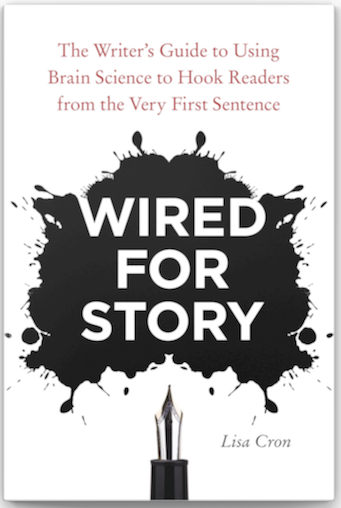This month’s In Case You Missed It article is from the September 2015 edition of our Free-Range Thinking Newsletter. The original article is about activating the audience’s mind’s eye, to create emotion, and elicit action. And now, in October 2023, we’ve have an addendum (written by Madi Goff). The original title of the article was “See-Feel-Do”, and Madi’s update transforms the title into “Experience-Feel-Do”.
First off, the original article from September 2015:

Photo by Khoa Võ
Good storytellers paint vivid pictures with their words because they understand a fundamental truth about their audience: if they can see the story in their mind’s eye, they will be able to feel it in their heart. Then – and only then – will they be ready to do something in response. Nonprofiteers often tell stories to elicit a “do” – join, give, sign, march – but all too often their stories fail to meet the first requirement. Unable to see, the audience is unlikely to feel and even less likely to do, and an opportunity is lost. It doesn’t have to be that way.
Consider this introduction of a teenage woman taking on the challenges of motherhood. Having read literally hundreds of nonprofit stories, I can assure you it is typical of the language used by organizations large and small working in this field:
The client, who was 17, was struggling to keep up with her one-year old son. He was extremely active and was into everything he could get his hands on. By the end of the day, the client was very frustrated and distraught.
Structurally, the story is off to a good start. We have a protagonist (the client), we can infer what she wants (to be a good mother), and we understand the challenge facing her (an extremely active child). The abstract language, however, prevents us from seeing the characters, setting and action. Now, contrast that introduction with the following version, which uses exactly the same number of words:
Karen, 17, struggled to keep up with Marco, who had just turned one. He would frequently climb all over her, open her purse, and dump its contents on the wood floor. By day’s end, Karen often had tears streaming down her cheeks.

Doesn’t this version feel different? Consider all the changes that contribute to that feeling: introducing the characters as Karen and Marco (instead of “the client” and “her son”) humanizes them as only names can and helps the audience identify with them.
Abstract terms that don’t conjure images have been replaced with specifics that help the audience visualize. “Extremely active,” which is vague, is brought into sharper focus with an image of Marco climbing all over Karen. “Into everything” becomes a purse that is emptied on the floor – you can almost hear the keys and loose change rattling on the hardwood. And rather than simply telling us that Karen is “frustrated and distraught,” the second version show us “tears streaming down her cheeks” and lets us draw our own conclusions.
 “Abstract concepts, generalities, and conceptual notions have a hard time engaging us, because we can’t see them, feel them, or otherwise experience them,” writes Lisa Cron in her excellent book, Wired for Story. “What all this boils down to is,” she adds, “the story is in the specifics.”
“Abstract concepts, generalities, and conceptual notions have a hard time engaging us, because we can’t see them, feel them, or otherwise experience them,” writes Lisa Cron in her excellent book, Wired for Story. “What all this boils down to is,” she adds, “the story is in the specifics.”
Stories can be the most powerful tool you have to engage an audience and move them to action. But keep in mind that people will not act if they don’t feel something first, and it’s hard to feel what you cannot see.
And now, an addendum from today, October 11th, 2023:
Since writing this article we’ve learned that not everyone has a visual imagination. While many people do create mental images, there’s a large number that think verbally, conceptually, in patterns or ways we have yet to discover – simply put, our human brains are brilliant and unfathomably varied. How does that change our storytelling? Engage a variety of senses! This not only makes our stories more accessible, but also it’s more effective storytelling. Help the audience, not just see, but experience your story. Experience creates feeling, and feeling creates action.
There is debate among neuroscientists and philosophers on how many senses humans have. The five well-known senses are sight, sound, touch, taste, and smell. Do you notice that your writing leans heavily on one of the senses more than others? Would it be difficult to switch it up?

Photo by Pixabay
Our challenge to you is this: In your next story, activate at least one sense that you don’t normally think to activate. In fact, you could try it right now, wherever you are. Are there any scents you can detect? Do you notice any tastes? What’s the furthest sound you can hear in this moment? Is there a texture that you notice touching your skin? As we teach in our Storytelling workshop, one vivid and concise detail can give the audience all they need to experience a moment or connect to a character.

Photo by ROMAN ODINTSOV
Final thought, if we were to add one sense to the five senses, we’d add an emotional sense. An emotional sense can be thought of as the awareness of an emotion in your body and what it feels like. It can be hard to describe how an emotion feels, so, sometimes, we turn to poetry-like descriptions. If these feel silly to you, practice them. Don’t shy away! You’re a storyteller! An emotional sense is an effective tool in storytelling. It can help your audience connect to and care deeply about your characters. When you’re creating a story try using physical, emotional language. Help us experience the emotion by giving us a sense of what is happening in the character’s body. Does a joyful smile sneak across your protagonist’s face? Or maybe they sigh in frustration? Or bounce in anticipation? Perhaps their head falls into their hands as they hold back tears? Or, like Karen above, do they have tears streaming down their cheeks? All of these examples create a physical sense of emotional life. Sometimes you’re handing the emotion right to the audience in your description, sometimes your letting them draw their own conclusions. Either way, you’re helping the audience experience and feel the story. That’s the surest way to move your audience to action.